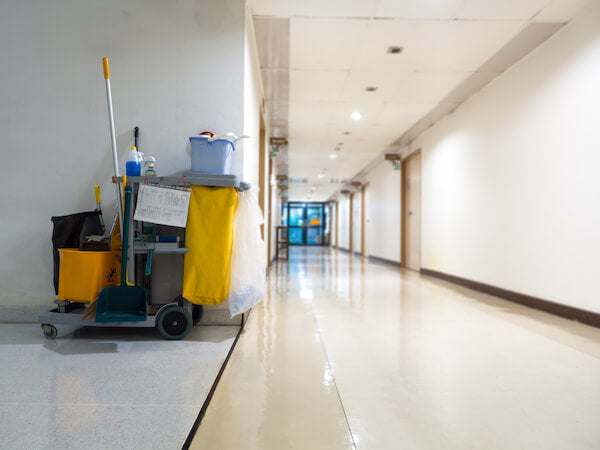
Janitorial Safety Procedures
While performing janitorial, custodian, and commercial cleaning duties; one must follow the company and site-specific safety procedures to ensure safe and effective sanitation. Here are some examples you might want to start with:
- Perform a pre-inspection of the site before work begins to identify any hazards that may exist on the site.
- Report any hazards to your supervisor and, or correct any hazards by eliminating it completely or by controlling it with personal protective equipment or other controls.
- Prior to beginning work, ensure that all personal protective equipment such as protective gloves, non-slip shoes, etc. are in use.
- Perform your work in a way that does not present a hazard to yourself or others.
- If your work presents a slip, trip, fall or other hazards to yourself or others, utilize a hazard control such as warning signs or warning tape to prevent access to the hazardous area.
- Once you are finished with your course of work, remove all hazard controls and perform a final inspection to ensure no hazard exists on the site.
Janitorial Safety Tips
Here are a few janitorial safety tips to keep you and others safe at janitorial sites:
- Utilize warning signs and tape wherever slip, trip, fall hazards exist.
- Always perform an initial and final inspection of the site to ensure hazards do not exist or to ensure they are at least controlled.
- Remember that chemicals (even environmentally friendly ones) can be hazardous to your health. Using chemicals in confined spaces is particularly hazardous because of the high concentration of vapors in relation to the amount of fresh air present.
- In some cases, a respirator may be required in order to clean safely. Ask for an air quality test if you suspect respiratory hazards exist.
- Avoid contact with electrical outlets, panels, and equipment. Contact with these may cause electrical shock and even death.
Janitorial Safety Manual
A
janitorial safety manual is used to document a janitorial company's safety policies, programs, and procedures. A janitorial specific safety manual should address all of the hazards that are specific to the janitorial and custodian trade. Examples include chemical safety, personal protective equipment, slips trips falls, etc.
Janitorial Safety Topics - Toolbox Talks Cleaning Industry
Nowhere on the internet will you find
safety topics or toolbox talks for the cleaning industry alone (at least not at the time of this article). So your task is to find a safety meeting topics library that simply "includes" topics that are relevant to the janitorial and cleaning trade. Our
safety meeting library does include the safety topics you'll need.
Janitorial Safety Program
A janitorial safety program is the same thing as a janitorial safety manual. Different people simply use different terms to describe this same document. As with the janitorial safety manual, the janitorial safety program too should contain content that is relevant to the janitorial and custodial trade. Specifically, it needs to address the "hazards" associated with the cleaning industry trade. Our
janitorial safety program does this very well.
Janitorial Safety Training
When it comes to janitorial safety training, the key is knowing what training is relevant to the janitorial trade. Much like determining the "hazards" in this trade for the safety manual or safety program, you will also choose janitorial training that covers these very same hazards.
Here is the OSHA page on the cleaning industry hazards and solutions: https://www.osha.gov/SLTC/cleaningindustry/hazards_solutions.html. It is critical to see this page and know the hazards so you can control them and protect people in this industry.
